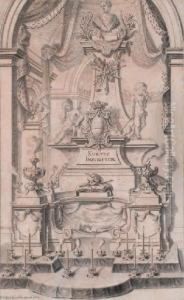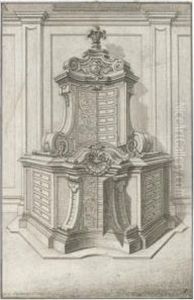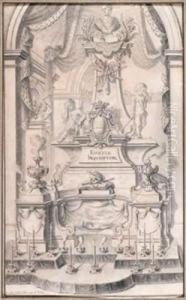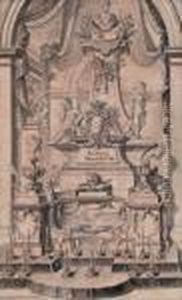Johann Jacob Schubler Paintings
Johann Jacob Schubler was a German polymath active during the early 18th century, known particularly for his work as an architect, mathematician, and engraver. Born on June 28, 1689, in Nuremberg, Schubler showed a strong propensity for technical and artistic disciplines from an early age.
Schubler's career encompassed a wide range of activities, reflecting the broad scope of his interests and talents. As an architect, he contributed to the tradition of Baroque architecture that was prevalent in Germany during his lifetime. His works include designs for both religious and secular buildings, although there are few surviving structures definitively attributed to him today.
In addition to his architectural endeavors, Schubler made significant contributions to the field of mathematics and measurement. He was known for his precision in these areas, which was a crucial skill for an architect of his era, when mathematical knowledge was directly applied to building design and construction. His proficiency in engraving allowed him to produce detailed illustrations and plans, which were often included in his published works.
Schubler's legacy is also tied to his writings and published works. His books on architecture, mathematics, and measurement were widely read and respected. These publications often included intricate engravings that showcased his dual skills as an artist and a mathematician. Among his notable works is the 'Zimmermanns-Journal', which is considered important for the study of carpentry and timber framing of the period.
Johann Jacob Schubler passed away on March 31, 1741, in Nuremberg. Despite the scarcity of physical structures attributed to him, his publications and theoretical contributions have left a lasting mark on the fields of architecture and mathematics. They provide valuable insights into the practices and knowledge of the Baroque period in Germany.



